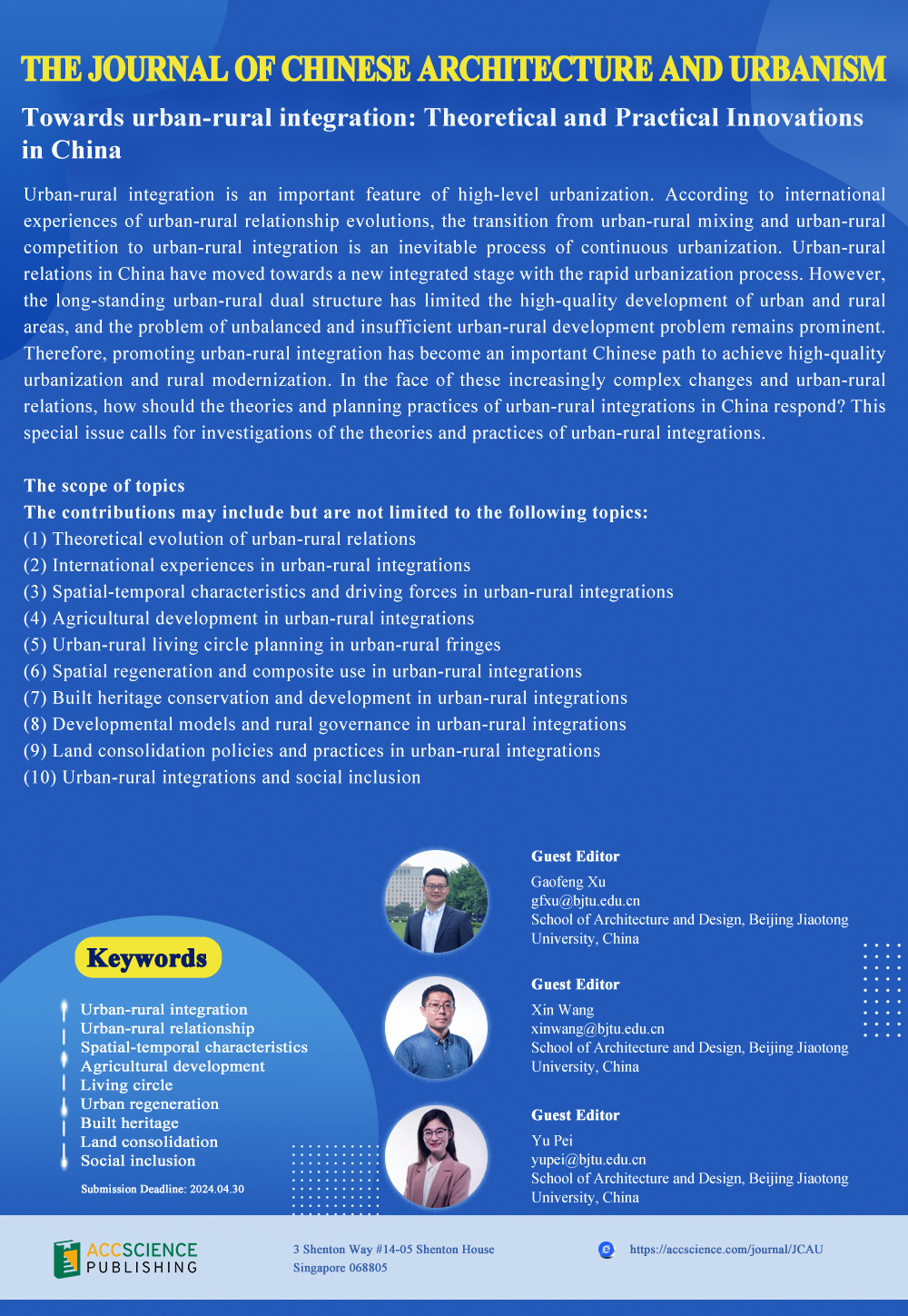
Urban-rural integration is an important feature of high-level urbanization. According to international experiences of urban-rural relationship evolutions, the transition from urban-rural mixing and urban-rural competition to urban-rural integration is an inevitable process of continuous urbanization. Urban-rural relations in China have moved towards a new integrated stage with the rapid urbanization process. However, the long-standing urban-rural dual structure has limited the high-quality development of urban and rural areas, and the problem of unbalanced and insufficient urban-rural development problem remains prominent. Therefore, promoting urban-rural integration has become an important Chinese path to achieve high-quality urbanization and rural modernization. In the face of these increasingly complex changes and urban-rural relations, how should the theories and planning practices of urban-rural integrations in China respond? This special issue calls for investigations of the theories and practices of urban-rural integrations.
The scope of topics
The contributions may include but are not limited to the following topics:
(1) Theoretical evolution of urban-rural relations
(2) International experiences in urban-rural integrations
(3) Spatial-temporal characteristics and driving forces in urban-rural integrations
(4) Agricultural development in urban-rural integrations
(5) Urban-rural living circle planning in urban-rural fringes
(6) Spatial regeneration and composite use in urban-rural integrations
(7) Built heritage conservation and development in urban-rural integrations
(8) Developmental models and rural governance in urban-rural integrations
(9) Land consolidation policies and practices in urban-rural integrations
(10) Urban-rural integrations and social inclusion
Residents’ perspectives on the efficacy of government strategies for urban heritage conservation in Guancheng District, Zhengzhou, Henan, China
Investigating the non-equilibrium in territorial space utilization benefits of urban agglomerations under new urbanization: A case study of the Pearl River Delta of China




